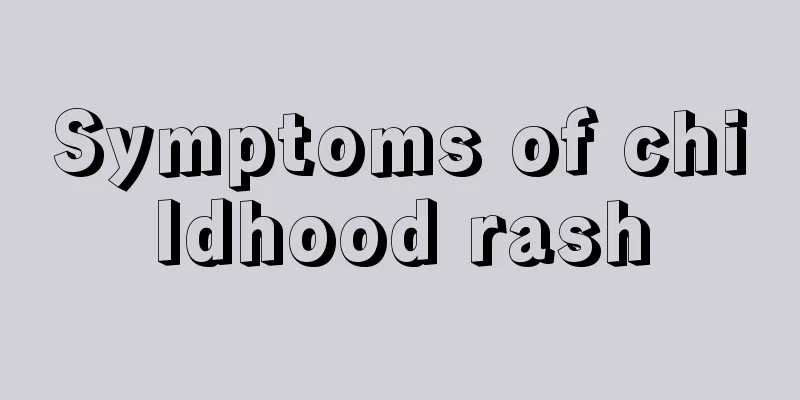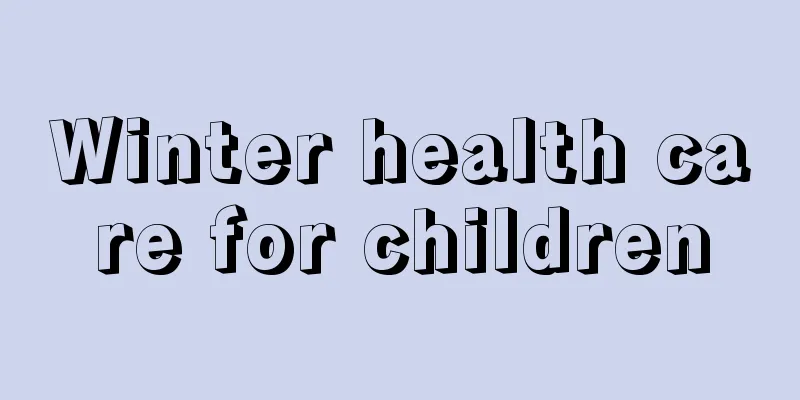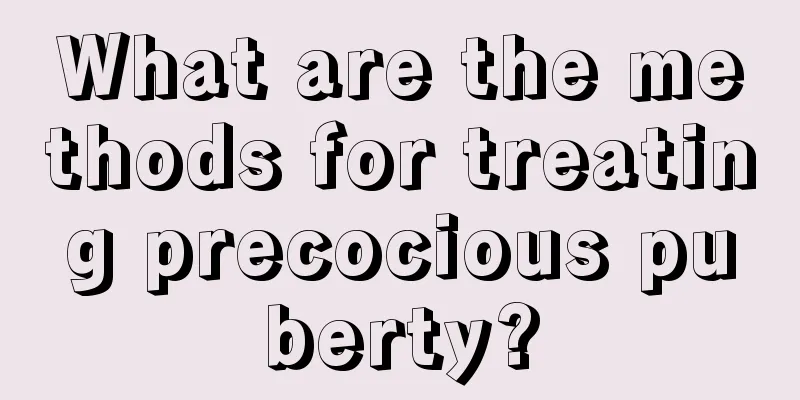Symptoms of childhood rash

|
Because we all know that sometimes some diseases have similar symptoms, so in daily life, when the body has these symptoms, we cannot distinguish them in time and fail to provide symptomatic treatment, which will make some diseases more serious, especially for children who do not have the ability to distinguish. As parents, we must take on the responsibility of guardianship. Parents should pay attention to what symptoms their children will have if they suffer from roseola. Symptoms and signs The infection usually occurs in children under 2 years old, especially in children under 1 year old. The incubation period is generally 5 to 15 days. 1. Fever period: High fever often occurs suddenly and lasts for 3 to 5 days. High fever may be accompanied by convulsions in the early stages. During this stage, except for loss of appetite, restlessness or mild cough, there are no obvious physical signs, only mild congestion of the pharynx and tonsils and mild enlargement of the superficial lymph nodes in the head and neck. The manifestation is high fever out of proportion to the mild symptoms and signs. 2. Eruptive stage: On the 3rd to 5th day of the disease, the body temperature suddenly returns to normal, and a rash appears at the same time or later. The rash is scattered, rose-red macules or maculopapules, which fade when pressed and rarely fuse. It first appears on the trunk and then quickly spreads to the neck, upper limbs, face and legs. The rash lasts for 24 to 48 hours and then disappears quickly, with no pigmentation or peeling. Medication Generally, no special treatment is required, and symptomatic treatment is the main treatment. Patients with high fever should be given antipyretics and sedatives, and water and nutritional supply should be increased. There is no definite antiviral drug at present. Antiviral drugs that are effective against cytomegalovirus can be tried in critically ill patients. Some people have used acyclovir, but the effect is not significant. Ganciclovir or foscarnet sodium is considered to be more effective. This disease is generally not serious and should focus on general treatment, enhanced nursing, bed rest, and drinking plenty of water. Provide a nutritious, easily digestible diet. For high fever, physical cooling or a small amount of antipyretics can be used. If the patient cries and becomes irritable, try using sedatives. If convulsions occur, stop them in time. Most diseases will have some symptoms. As long as we discover them in time and take timely treatment and solutions, we can reduce the adverse effects on children as soon as possible. At the same time, we should also ensure that children have healthy and scientific living habits and eating habits in normal times to improve their body's immunity. |
<<: The difference between exanthema and measles
>>: Nursing methods for children with acute rash
Recommend
What are the characteristics of neonatal pathological jaundice?
Neonatal pathological jaundice is a problem that ...
What should we do if the baby eats too much?
What should we do if our baby eats too much? Many...
What are the methods to reduce fever in children?
Fever in children is one of the common diseases i...
Can a child use a fan when he has a fever?
We all know that babies are prone to fever, so ma...
What is happening when a child passes bubbles?
Because the baby is in the period of physical dev...
When does the baby's pylorus close?
Many new parents are very worried about when thei...
What is the cause of a hard lump on the sole of a child's foot?
Many parents will find that their children have h...
What to do if your 3-year-old baby has a poor physique
Usually every parent hopes that their baby has a ...
Treatment of diarrhea in six-month-old babies
Diarrhea in six-month-old babies is one of the di...
My baby has a low fever of 37.5 degrees. What's going on?
Low-grade fever refers to a body temperature betw...
What are the things to pay attention to when choosing a cooling patch?
Whenever the seasons change, many people with low...
What are the symptoms of heat stroke in children?
What worries parents the most is their children g...
What should I do if my child has dark spots on his face?
If a child has dark spots on his face, it may be ...
What to do if your child swallows a coin
Children are very naughty and cannot distinguish ...
What to do if your 2-year-old baby vomits
Babies are relatively common in our lives. Women ...









